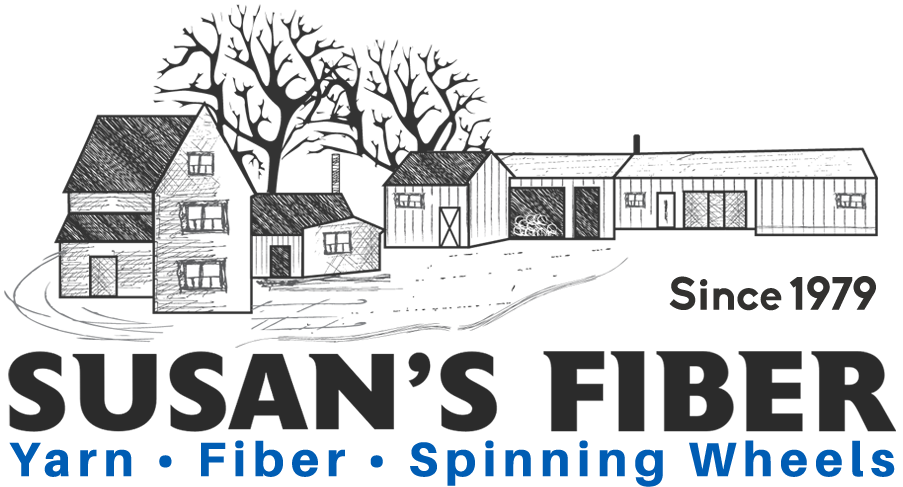How to Pick Out a Loom
 Tippy the Teeswater Tips!
Tippy the Teeswater Tips!
When selecting a loom to purchase it is important to consider what kinds of projects you want to make, the space you have available, your budget for a loom, etc. At Susan’s Fiber Shop we are happy to help you in order to ensure you end up with the loom of your dreams!
There are 5 different types of looms and the width of each is what determines how wide your projects can be.
-
Inkle Looms: The Inkle loom is used to make narrow bands (usually not more than 3”-4” wide). It is a very inexpensive way to start and get a feel for weaving due to its relatively low cost. It is easy to create elaborate patterns due to the warp being so narrow. These looms are good for long, narrow projects; such as belts, dog collars and leashes, hair bands, guitar straps, etc.
-
Tapestry Looms: Tapestry looms (Also called Frame Looms) are typically used to make wall-hangings. Most often weaving on a tapestry loom is done without any mechanical assistance because tapestry weavers hand-select where the weft starts and stops. As a result of this the weft in tapestry weaving is discontinuous (meaning it does not go from selvedge edge to edge. These looms are great for making beautiful pieces to hang on your wall and enjoy.
-
Rigid Heddle Looms: A Rigid Heddle loom is a great place for a beginner weaver to start. They are on the smaller side of looms and are often foldable and portable. These looms have one shaft/reed and the warp gets threaded through alternating slots and holes to create the shed. Rigid Heddle looms will allow you to create projects with a basic weave pattern. The Rigid Heddle loom is a good loom for smaller projects like scarves, table placemats, and napkins.
-
Table Looms: Table looms are a smaller space available alternative to floor looms. They are able to sit on a table and some of them have the ability to fold-up when not in use which makes them easy to store. Table looms are smaller than floor looms but still offer the options of 4, 6, or 8 shafts, which opens up the possibility of patterns and color variation. These hand-operated looms allow you to get a feel for more complex weaving structures but still have the opportunity to do the basic patterns. Table looms are good for making table runners, scarves, placemats, kitchen towels, etc.
- Floor Looms: Floor looms are the larger version of table looms. As a result, they take up more space and are on the higher end when it comes to price. These looms use feet treadles instead of hand levers to move the harnesses up and down when creating the shaft. A floor loom is a great choice of loom for someone who wants to get into weaving, they are larger, stronger and have a wider range of possible projects. Floor looms are good for making a wide variety of projects from scarves or hand towels to rugs and wall hangings.
Have Questions about which loom would be good for you? Call Susan! 1-920-623-4237

 Tippy the Teeswater Tips!
Tippy the Teeswater Tips!